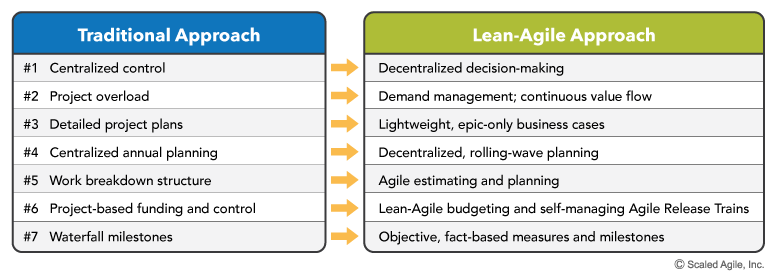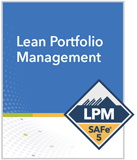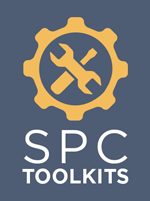![]()
Anchor new approaches in the culture.
—John Kotter
Extend to the Portfolio
This is article 11 in the SAFe® Implementation Roadmap series. Click here to view the entire roadmap.
In the previous articles in the SAFe Implementation Roadmap series, we described the first 10 ‘critical moves’ of the roadmap:
- Reaching the Tipping Point
- Train Lean-Agile Change Agents
- Train Executives, Managers, and Leaders
- Create a Lean-Agile Center of Excellence (LACE)
- Identify Value Streams and Agile Release Trains (ARTs)
- Create the Implementation Plan
- Prepare for ART Launch
- Train Teams and Launch the ART
- Coach ART Execution
- Launch More ARTs and Value Streams
![]() A lot has been accomplished. SAFe has been implemented across several, if not all, of the Development Value Streams. You see measurable benefits in time-to-market, quality, productivity, and employee engagement. The new ways of working are becoming second nature for those operating within those value streams. The organization’s commitment to transforming the business at all levels, and becoming a Lean-Agile enterprise will be tested. Now is the time to expand the implementation to include maturing the enterprise’s Lean Portfolio Management competency and anchoring the culture’s new approach.
A lot has been accomplished. SAFe has been implemented across several, if not all, of the Development Value Streams. You see measurable benefits in time-to-market, quality, productivity, and employee engagement. The new ways of working are becoming second nature for those operating within those value streams. The organization’s commitment to transforming the business at all levels, and becoming a Lean-Agile enterprise will be tested. Now is the time to expand the implementation to include maturing the enterprise’s Lean Portfolio Management competency and anchoring the culture’s new approach.
Details
In the last article, Launch More ARTs and Value Streams, we described how enterprise leaders drive and facilitate the broader implementation of SAFe. These ARTs and development value streams’ success creates a buzz in the organization about the new and better way of working. It also exposes the traditional, phase-gated processes at higher-levels that impede performance. Inevitably, this puts pressure on the portfolio and triggers additional changes to improve strategic flow further.
These issues typically include:
- Perpetual overload of demand versus capacity, which jeopardizes throughput and undermines the strategy
- Project-based funding (bringing the people to work), cost accounting friction, and overhead
- No understanding of how to apply capitalization in Agile
- Overly detailed business cases based on speculative, lagging ROI projections
- Strangulation by the iron triangle (fixed scope, cost, and date projects)
- Traditional Supplier management and coordination—focus on lowest cost, rather than the highest lifecycle value
- Phase-gate approval processes that don’t mitigate risk and discourage incremental delivery
Nowhere is Lean-Agile Leadership more critical than when addressing some of these remaining legacy challenges. If these approaches are not modernized, the enterprise will be unable to escape the inertia of traditional, legacy approaches, causing the organization to revert back to the old way of doing things. This inevitably leads to attempting Agile development with a non-Agile mindset, which is often referred to as ‘Agile in name only.’ The results can be seriously compromised. But help is at hand. Figure 1 illustrates how these mindsets evolve with training and engagement in the process of implementing SAFe.

Leading the Transformation
Many of these traditional mindsets exist throughout the organization and, left unchanged, can sabotage a fully-realized implementation. To help the SAFe workforce embrace the new way of working, we’ve described how SAFe Program Consultants (SPCs) and Lean-Agile Leaders lead the transformation by providing the knowledge needed to inspire an attitude to embrace the new mindset. But since it is better to lead than follow, we increasingly see an emerging Agile Program Management Office (APMO) taking an active, leadership role in the transformation. In so doing, they model the Lean-Agile Principles, behaviors, and practices, including:
- Lead the change and foster relentless improvement
- Align development value streams to enterprise strategy
- Establish enterprise value flow
- Implement Lean financial management and budgeting
- Align portfolio demand to implementation capacity and Agile forecasting
- Evolve leaner and more objective governance practices
- Foster a leaner approach to contracts and supplier relationships
Each is described in the following sections.
Lead the Change and Foster Relentless Improvement
In many enterprises, LPM and APMO personnel lead the change and the new way of working. In so doing, they sponsor and participate in the LACE, become SPCs, and support or encourage the development of specialty Communities of Practice (CoPs) that focus on and advance the new roles, responsibilities, and behaviors.
Align Development Value Streams with Enterprise Strategy
Development Value Streams (and the ARTs and Agile Teams that enable them) exist for one reason—to meet the portfolio’s strategic goals. Empowering each value stream with the strategic clarity and resources to do so is a core responsibility of the LPM. This empowerment is accomplished through a regular cycle of establishing, refining and continuously communicating the portfolio’s Strategic Themes and vision through the portfolio canvas.
Establish Enterprise Value Flow
Managing the flow of work from portfolio level initiatives is an essential step in the maturity cycle. This flow requires implementing the Portfolio Backlog and Kanban system, filling the role of Epic Owners by adopting the Epics construct, and the Lean business case. Also, Enterprise Architects establish enabler epics that provide common technological underpinnings, which support the broader use cases across the full portfolio.
Implement Lean Financial Management
Historically, enterprises were built by carefully controlling the definition and cost of development via the ‘project’ construct. In a sense, however, the project model provided temporary work for temporary people, and the inevitable cost and schedule overruns caused personnel upheaval and financial churning.
But as we improve our methods and discover the long-lived nature of most of what we do, we must move to a more persistent flow-based model. The new approach must minimize overhead, give people a stronger sense of purpose, and facilitate institutional knowledge growth. This continuous value flow is the larger purpose of the portfolio’s development value streams, funded following Lean-Budget practices. Lean Budgets, informed by Strategic Themes and appropriate Guardrails, enables development value streams and ARTs to move fast and make decentralized decisions while staying aligned to Portfolio-level objectives. Also, to ensure that development costs are categorized without excessive overhead, a leaner approach to managing capital and expense costs is described in the CapEx and OpEx guidance article.
Align Portfolio Demand to Implementation Capacity, Agile Forecasting
Lean thinking teaches us that any system operating in a constant state of overload will deliver far less than its actual capacity. This overhead occurs for any development process in which excess Work in Process (WIP) drives multiplexing (lowering productivity), unpredictability (reducing trust and engagement), and burnout.
By consistently applying the velocity concept at the team, ART, and Solution Train, the emerging SAFe enterprise uses this invaluable knowledge to limit portfolio WIP until demand matches capacity. Managing WIP increases the throughput and value delivered to the customer. And in place of detailed long-range commitments, the SAFe enterprise applies Agile estimating and forecasting to create a portfolio Roadmap, a baseline of expectations that are communicated to internal and external stakeholders.
Evolve Leaner and More Objective Governance Practices
As noted in Figure 1, traditional governance practices were often implemented based on waterfall lifecycle development. This sequential approach typically included passing various phase-gate milestones, along with proxy, paper-based measures of completion. The Lean-Agile model, however, works differently. As explained in SAFe Lean-Agile Principle #5 – Base milestones on objective evidence of working systems, governance focuses on establishing and measuring the appropriate objective measures at each Program Increment (PI) boundary.
Foster a Leaner Approach to Supplier and Customer Relationships
The Lean-Agile Mindset informs another in the group of business practices—how the enterprise treats its suppliers and customers.
The Lean enterprise takes the long view and enters into long-term partnerships with suppliers, which produces the lowest overall cost of ownership, instead of a series of near-term maneuvers that lower the cost of a current deliverable. Indeed, the enterprise will engage directly in helping their suppliers adopt Lean-Agile thinking and may even participate in developing a supplier’s capabilities in that area.
The SAFe enterprise also recognizes the critical importance of customers to the development value stream. That realization means they are included in such key events as PI Planning, System and Solution Demos, and Inspect and Adapt (I&A).
They take on the responsibilities incumbent on a customer in a Lean-Agile ecosystem. These relationships are fostered by adopting a leaner approach to Agile Contracts.
Moving Forward
By now, substantial business benefits are growing daily. Improvements in quality, productivity, time-to-market, and employee engagement are meeting or exceeding expectations. So how do you sustain this over the long term? This is the subject of the next critical move: Accelerate.
Additional Resources

SAFe LPM Course – This is a two-day, interactive course that teaches the practical tools and techniques necessary to implement Strategy and Investment Funding, Agile Portfolio Operations, and Lean Governance. An additional one-day workshop is available to help enterprise teams get started with LPM in their organization.

SAFe LPM Execution Toolkit – This toolkit provides templates, tools, and other assets to support the ongoing operation of the LPM function.
Last update: 10 February 2021





